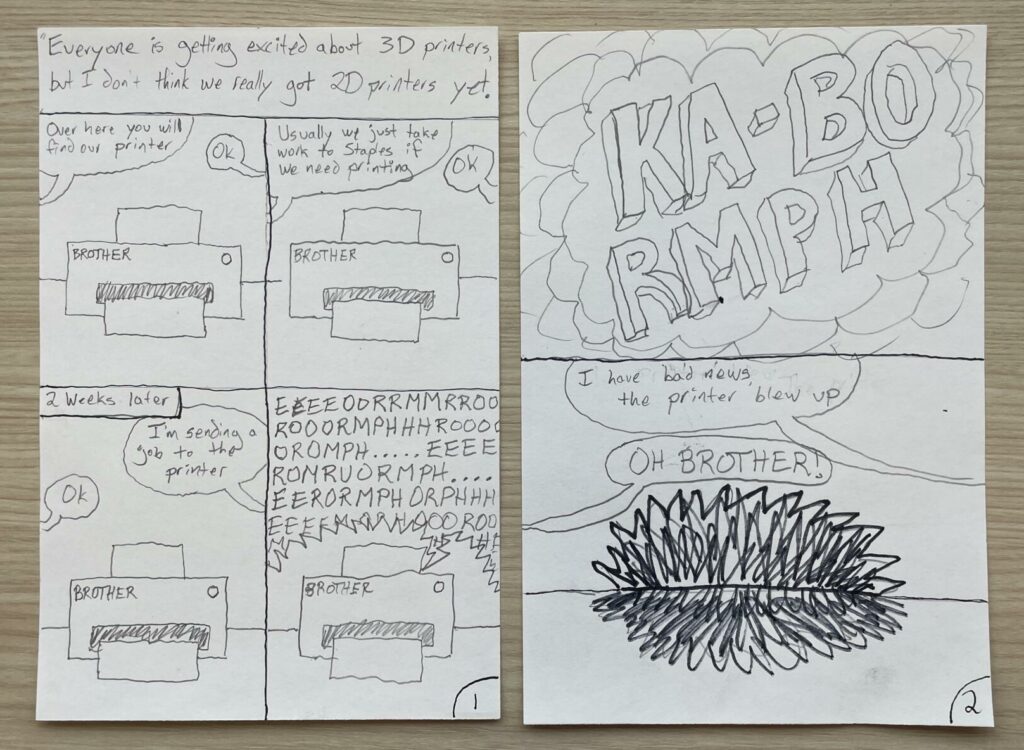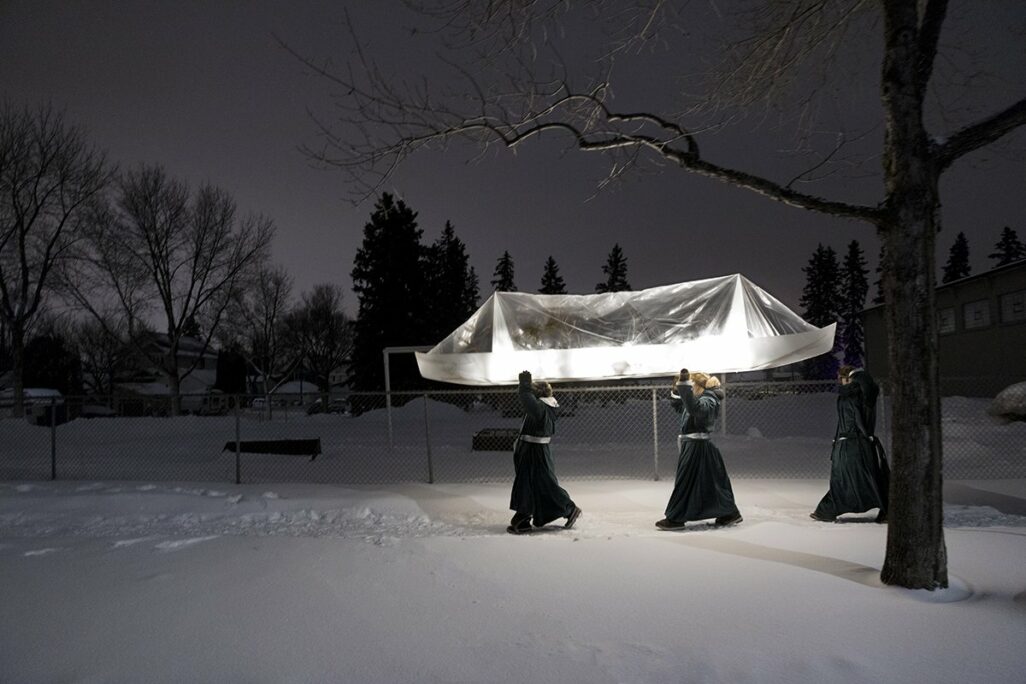It’s 2050: Sci-fi comics
Share:
About the artwork
During this workshop we will create a science fiction story inspired by our experiences of Laura St. Pierre: All that You Change Changes You / Tout ce que tu touches, tu le changes. On view at the MacKenzie until 11 August 2024.
Les Porteuses is a matriarchal reinterpretation of the French-Canadian folktale of a bewitched canoe and of loggers who gamble their souls to cheat time and fate. In St. Pierre’s reimagining, a procession of brave women from the future enters into a pact with the devil in order to return to the 21st century in time-travelling canoes. Landing in Regina, they collect plant specimens from the prairies to revegetate a barren future landscape. Throughout these works, St. Pierre reminds us of the value of even the most minute forms of plant life, land, water, and light. Amid the decay is an underlying sense of optimism; although future generations may inherit an inhospitable landscape, it is not without hope. St. Pierre highlights the value of unassuming treasures, that anything we find can be saved, and in turn, what we save may save us.
About the Artist
Saskatoon-based artist Laura St. Pierre explores her relationship with the natural environment through a multidisciplinary art practice. Her installations, sculptures, photography, and public works simulate scavenger activity within Canadian regions particularly significant to her personal history and experience. St. Pierre’s work has been exhibited in major art exhibitions such as the Alberta Biennal of Contemporary Art, the Bonavista Biennale, and Manif d’art – La biennale de Québec. St. Pierre has earned Bachelor degrees from the University of British Columbia and the University of Alberta, and completed a Master of Fine Arts degree at Concordia University in Montreal. Her work is in the permanent collections of The Dunlop Gallery in Regina, the Saskatchewan Arts Board, the Alberta Foundation for the Arts, and the Art Gallery of Alberta.
Studio Activity
Create a comic artwork that helps us both imagine the future and examine our present. During this workshop we will create a science fiction story inspired by our experiences of Laura St. Pierre: All That You Change Changes You. Think about what the earth will look like in 2050 or beyond.

Materials:
- Colored pencils
- Markers
- Pencils and erasers
- Sharpeners
- Paper
- Storyboard template
- Small paper for writing your story
- Ruler
Important words:
- Narrative Hook: A technique that a writer uses to draw in the reader, so they want to keep reading.
- Dialogue: Conversation between characters in a story
- Beats: Important turns, events, transitions, and confrontations in a story.
Instructions:
- Choose the narrative hook of your story: Imagine Earth in 2050 and decide your story main idea.
- Pre-write your story. Brainstorm ideas on paper for your comic story.
- Choose your main character: Think of the story of who you would like to tell, who is this person or being? What challenges does this person face?
- Introduce other characters: Who else is in this story? Are these characters friends or non-friends of the main character? How will their paths meet in a point of the story?
- Outline key moments and obstacles: What are the beats of your story? What obstacles does the protagonist encounter in the story? Who or what opposes their journey?
- Use the storyboard template to plan the number of panels needed to tell your story’s essence. Think about how you spread out your story to convey important moments.
- Sketch your panels lightly with a pencil, adjust panel sizes as needed. Consider that the panel sizes create special effects in the storytelling.
- Outline your sketches in black and add colors that best support your story’s message. Consider adding dialogue where they support your story.
Things to Think About
- What new challenges will people face in the 2050s?
- Why is it important for us to tell stories?
- If you could time travel and retrieve something from the past to use in your present, what would it be?

